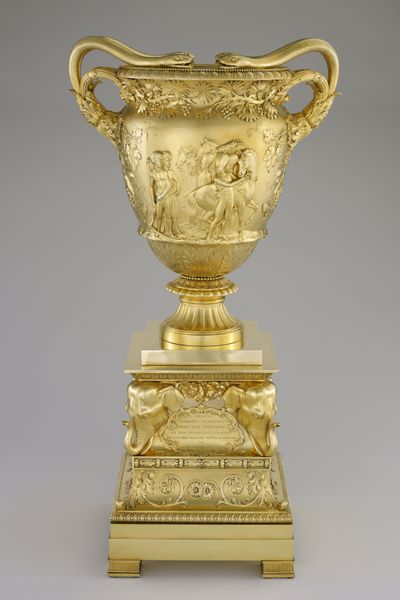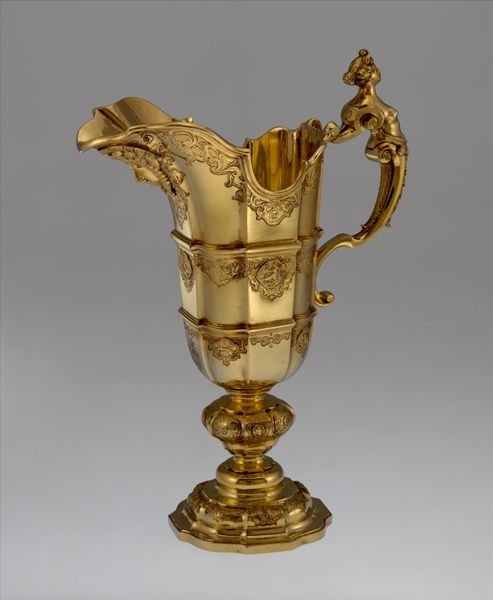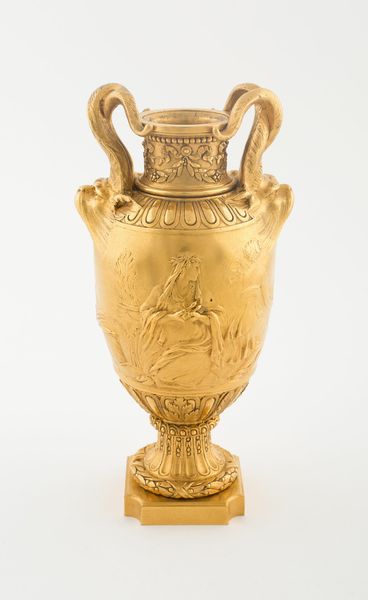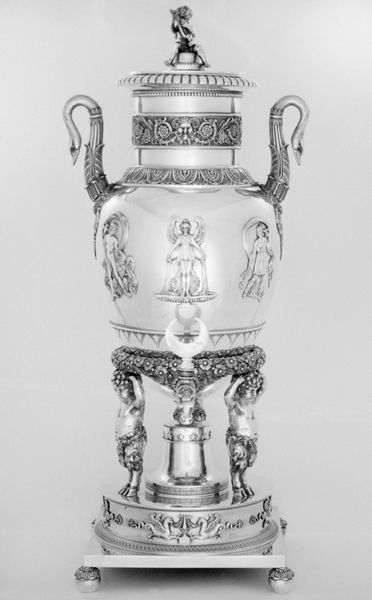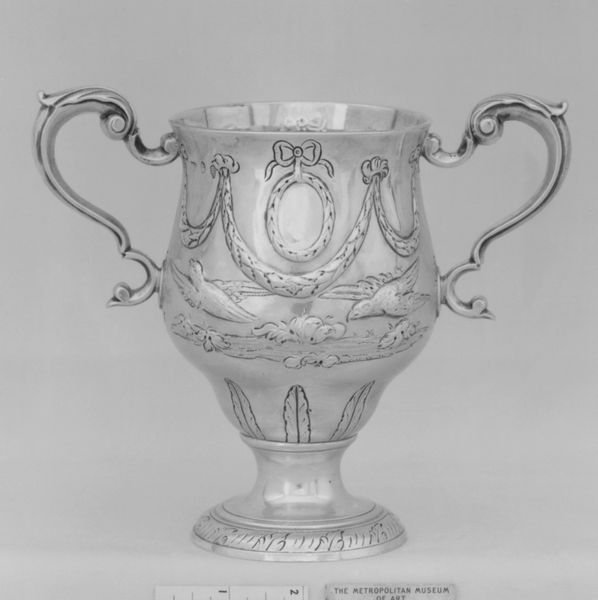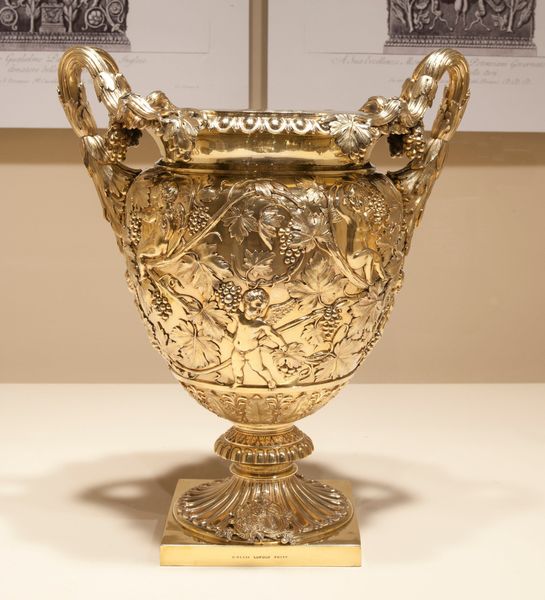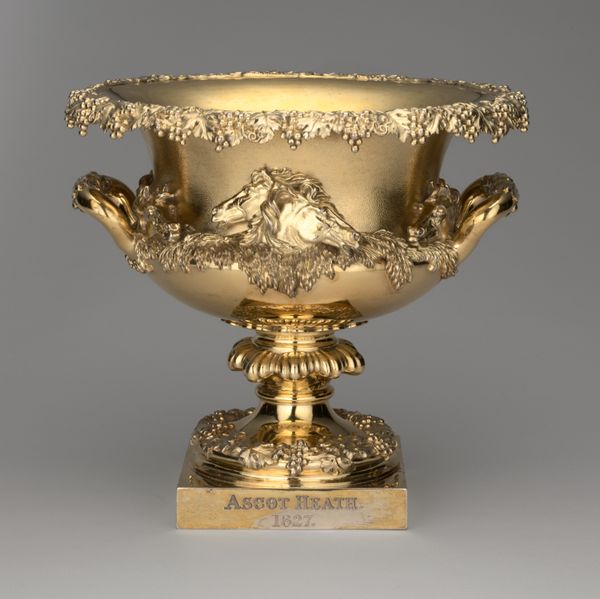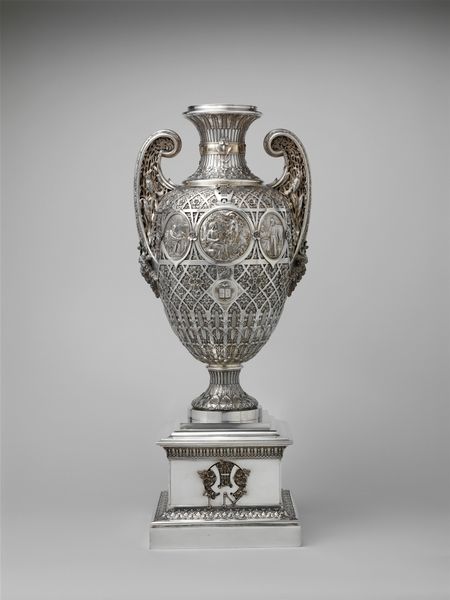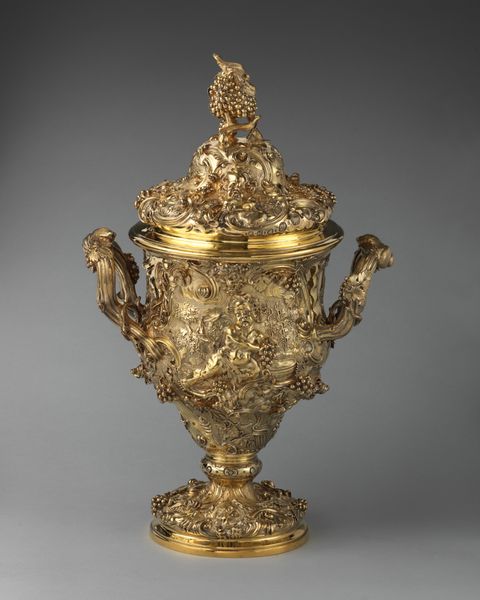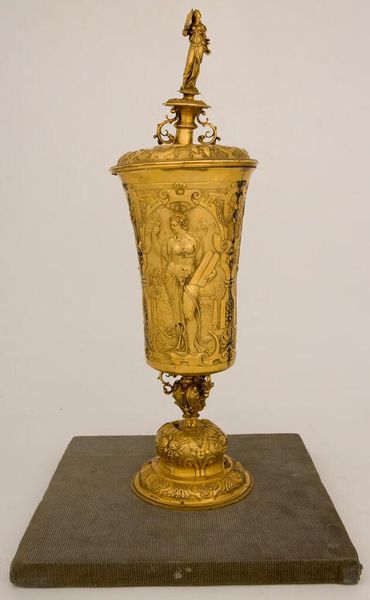
silver, metal, sculpture
#
neoclacissism
#
silver
#
metal
#
form
#
geometric
#
sculpture
Dimensions: 14 1/4 x 12 x 8 3/4 in. (36.2 x 30.5 x 22.2 cm)
Copyright: Public Domain
Editor: This is a silver wine cooler, made in 1828 by Edward, Edward, James, and Barnard. It’s incredibly ornate! The detailing with the leaves, grapes, and figures really strikes me. What layers can you peel back from this shiny object? Curator: Well, its very shininess is the first thing that strikes me. In the context of its time, such opulence speaks volumes. How does a piece like this reflect the social inequalities inherent in its commission and ownership? Who had access to such luxury? Editor: That's a great question. The wealth disparity back then must have been staggering. So, beyond the economic statement, does the imagery tell us anything? Curator: Absolutely. Think about the Neoclassical style— the celebration of Greco-Roman ideals. This era frequently sanitized the realities of ancient cultures, masking the pervasive slavery and social hierarchies. The wine cooler, adorned with bacchanalian imagery, seems almost a nostalgic yearning for a world built on exploitation. Who did it exclude? Who benefitted from this excess? Editor: I see what you mean. It's not just about appreciating its aesthetic beauty but also about critically examining the system that enabled its creation. So even a “simple” wine cooler becomes an artefact filled with questions and ethical considerations. Curator: Exactly. And thinking about the contemporary relevance, does conspicuous consumption persist today? How do luxury items reflect power structures in our current global context? Editor: That’s so interesting. I’ll never look at silverware the same way again! Thank you! Curator: And thank you. Hopefully, we've shown how art, even the most seemingly decorative, can be a lens through which we examine larger social and political questions.
Comments
minneapolisinstituteofart about 2 years ago
⋮
This wine cooler is from a set of four in the Institute's collection inspired by the "Buckingham Vase" excavated on the grounds of the imperial villa at Tivoli, outside Rome (AD 118-130). The Buckingham Vase, a 46-inch high marble urn acquired by the first Marquess of Buckingham, was portayed in engravings published by Italian artist Giovanni Battista Piranesi. While not exact copies of the original vase, the wine coolers retain the classical urn shape and feature the same cavorting Erotes (winged gods of love) cavorting among twining grape vines and leaves.
Join the conversation
Join millions of artists and users on Artera today and experience the ultimate creative platform.
